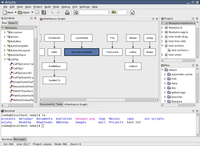
Photo from wikipedia
The language environment is important for the development of early communication and language. In the current study, we describe the natural home language environment of 9-month-old infants in Sweden and… Click to show full abstract
The language environment is important for the development of early communication and language. In the current study, we describe the natural home language environment of 9-month-old infants in Sweden and its concurrent association with language development. Eighty-eight families took part in the study. The home language environment was measured using the Language ENvironment Analysis (LENA) system, and language development was assessed using Swedish Early Communicative Development Inventory (SECDI), a parent questionnaire. LENA measures showed dramatic variation between individuals but were comparable to and showed overlapping variance with previous studies conducted in English-speaking households. Nonetheless, there were significantly more infant vocalizations and conversational turns in the present study than in one previous study. Adult word count correlated significantly and positively with infants’ Use of gestures and the subscale of that section Communicative gestures. These together with another four non-significant associations formed a consistent overall pattern that suggested a link between infants’ language environment and language development. Although the direction of causality cannot be determined from the current data, future studies should examine children longitudinally to assess the directionality or the bidirectionality of the reported associations between infant’s language environment and language development.
Journal Title: Frontiers in Psychology
Year Published: 2020
Link to full text (if available)
Share on Social Media: Sign Up to like & get
recommendations!